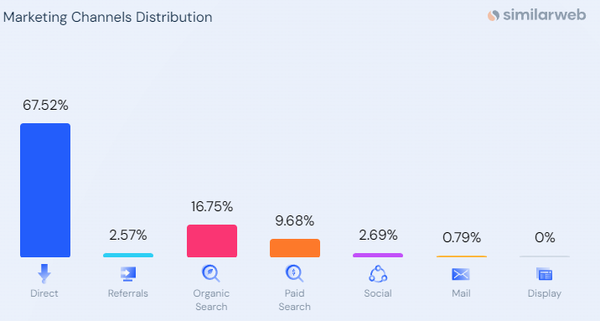Audience Segments in Google Ads: The 2024 Guide
Learn how Google Ads audience segments can reduce CPA, increase conversion rates and reduce your ad spend...
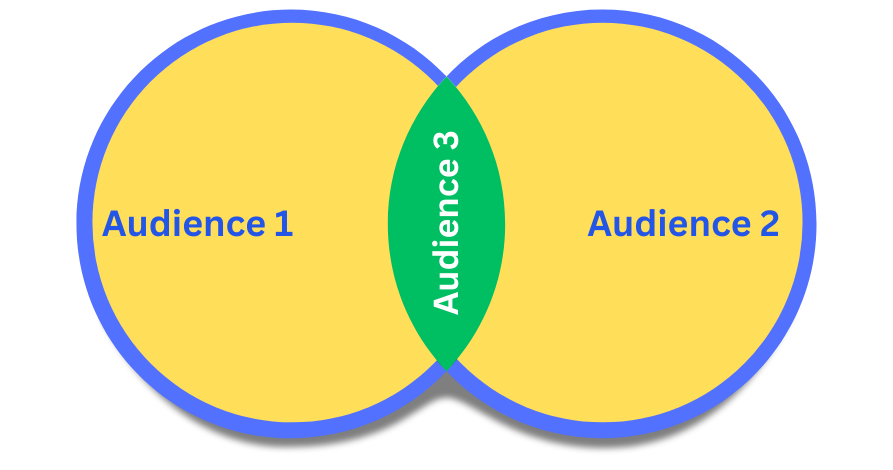
Definition: What’s an Audience Segment?

Audience segments in Google ads are ways which you can target specific groups of people based on what Google determines they’re interested in, their intents and demographic information.
Google determines these interests by collecting user behavior data from 3rd-party websites and within their own products. So think of how many websites use Google Ad Sense for monetization, or Google Analytics, or Google Search Console, Gmail, etc. and you can imagine they collect A LOT of data points. (They say they don’t do it at an individual level, only as aggregated data in groups, but who can really believe that?)
An important thing to note is that the audience data is refreshed every week(30 days lookback window) and search data 1-2 weeks into the following month (3 year lookback period).
The Importance of Audience Segments: Why Should You Care?
Being able to limit your targeting by narrowing down your audience will save costs (you’re no longer advertising to the entire world) and can help improve conversion rates, therefor reducing your cost per acquisition and improving ROI since you’re addressing people with a higher chance of showing interest for your product or service.
The diagram below shows how specific segmentation helps weed out a lot of unnecessary traffic you might have been paying for if you ran campaigns without using audience segments before.
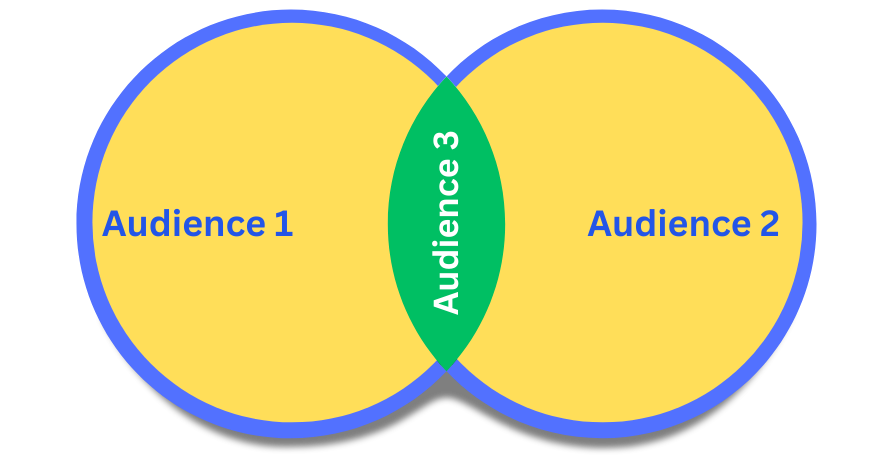
Focusing on a specific audience enables you to double down on creating impact for that particular group and can enhance the quality of your ads, your story and overall effect.
Advertisers shouldn’t be worried about scale; at least in the beginning, take time to really understand that audience and who you are speaking to, and worry about scaling later. If there is no clear indicator that your campaigns are working with a very specific audience, chances are you’re not going to look to scale anytime soon.
Another huge benefit of using audiences is that it allows for adjusting bids for different audiences, allowing users to increase or decrease bids, exclude certain audiences, and further reduce the costs per acquisition for a campaign.
Targeting vs. Observation
There's a major distinction between Targeting and Observation mode for your audiences when you decide to use them within your campaigns.
What Targeting does is to NARROW the audience and only serve ads to the users that match your campaign settings AND your selected audience.
So for example, if you have a search campaign for 'accounting software' and that has 3,000 monthly search volume, if you add an audience where you want only people who work in accounting, and select Targeting, your ads are going to show only to a few of those 3,000 because you have excluded everyone else.
What Observation does is two things:
- It gives you the option to collect data for that segment once you apply any audience to your campaign.
- It allows you to adjust bids on the audience segments that you want to adjust - positively or negatively.
So in the example above, we'd show up with our ads for all 3,000 searches, and see how many of those searches come from the audience we have selected and how well they perform.
Pro Tip: As a recommendation, I would suggest you start out with an Observation first to collect enough data on the audience you have selected, and then switch to Targeting once you're confident enough.
What are The Different Types of Audience Segments?
There are a total of 6 types of audience segments that can be applied to campaigns for Display, search, video, hotel, and standard shopping.
Every segment from the interests and demographics section will also have 'Unknown' as an option, which you can include or exclude. It's important to realize that if you're targeting more tech-savvy users or someone who cares about their privacy, they will probably fall into the 'Unknown' category.
Affinity Segments

Targets hobbies—what people are passionate about. It may be a decent segment to use at the start of a campaign where you're exploring and learning about the ICP (Ideal Customer Profile) market or looking to expand a specific audience. I have not had success with them personally, but it can be a good starting point.
Here are the options:
Affinity segment options:
- Banking & Finance
- Banking & Finance » Avid Investors
- Beauty & Wellness
- Beauty & Wellness » Beauty Mavens
- Beauty & Wellness » Frequently Visits Salons
- Food & Dining
- Food & Dining » Coffee Shop Regulars
- Food & Dining » Cooking Enthusiasts
- Food & Dining » Cooking Enthusiasts » 30 Minute Chefs
- Food & Dining » Cooking Enthusiasts » Aspiring Chefs
- Food & Dining » Fast Food Cravers
- Food & Dining » Foodies
- Food & Dining » Frequently Dines Out
- Food & Dining » Frequently Dines Out » Diners by Meal
- Food & Dining » Frequently Dines Out » Diners by Meal » Frequently Eats Breakfast Out
- Food & Dining » Frequently Dines Out » Diners by Meal » Frequently Eats Dinner Out
- Food & Dining » Frequently Dines Out » Diners by Meal » Frequently Eats Lunch Out
- Home & Garden » Do-It-Yourselfers
- Home & Garden » Home Decor Enthusiasts
- Lifestyles & Hobbies
- Lifestyles & Hobbies » Art & Theater Aficionados
- Lifestyles & Hobbies » Family-Focused
- Lifestyles & Hobbies » Fashionistas
- Lifestyles & Hobbies » Frequently Attends Live Events
- Lifestyles & Hobbies » Green Living Enthusiasts
- Lifestyles & Hobbies » Nightlife Enthusiasts
- Lifestyles & Hobbies » Outdoor Enthusiasts
- Lifestyles & Hobbies » Pet Lovers
- Lifestyles & Hobbies » Pet Lovers » Cat Lovers
- Lifestyles & Hobbies » Shutterbugs
- Lifestyles & Hobbies » Thrill Seekers
- Media & Entertainment
- Media & Entertainment » Book Lovers
- Media & Entertainment » Comics & Animation Fans
- Media & Entertainment » Gamers
- Media & Entertainment » Gamers » Action Game Fans
- Media & Entertainment » Gamers » Adventure & Strategy Game Fans
- Media & Entertainment » Gamers » Casual & Social Gamers
- Media & Entertainment » Gamers » Driving & Racing Game Fans
- Media & Entertainment » Gamers » Hardcore Gamers
- Media & Entertainment » Gamers » Roleplaying Game Fans
- Media & Entertainment » Gamers » Shooter Game Fans
- Media & Entertainment » Gamers » Sports Game Fans
- Media & Entertainment » Light TV Viewers
- Media & Entertainment » Movie Lovers
- Media & Entertainment » Movie Lovers » Action & Adventure Movie Fans
- Media & Entertainment » Movie Lovers » Comedy Movie Fans
- Media & Entertainment » Movie Lovers » Family Movie Fans
- Media & Entertainment » Movie Lovers » Romance & Drama Movie Fans
- Media & Entertainment » Movie Lovers » Sci-Fi & Fantasy Movie Fans
- Media & Entertainment » Movie Lovers » South Asian Film Fans
- Media & Entertainment » Music Lovers
- Media & Entertainment » Music Lovers » Blues Fans
- Media & Entertainment » Music Lovers » Classical Music Enthusiasts
- Media & Entertainment » Music Lovers » Country Music Fans
- Media & Entertainment » Music Lovers » Electronic Dance Music Fans
- Media & Entertainment » Music Lovers » Folk & Traditional Music Enthusiasts
- Media & Entertainment » Music Lovers » Indie & Alternative Rock Fans
- Media & Entertainment » Music Lovers » Metalheads
- Media & Entertainment » Music Lovers » Pop Music Fans
- Media & Entertainment » Music Lovers » Rap & Hip Hop Fans
- Media & Entertainment » Music Lovers » Rock Music Fans
- Media & Entertainment » Music Lovers » Spanish-Language Music Fans
- Media & Entertainment » Music Lovers » World Music Fans
- Media & Entertainment » TV Lovers » Family Television Fans
- Media & Entertainment » TV Lovers » Game, Reality & Talk Show Fans
- Media & Entertainment » TV Lovers » Sci-Fi & Fantasy TV Fans
- Media & Entertainment » TV Lovers » TV Comedy Fans
- Media & Entertainment » TV Lovers » TV Drama Fans
- News & Politics
- News & Politics » Avid News Readers
- News & Politics » Avid News Readers » Avid Local News Readers
- News & Politics » Avid News Readers » Avid Political News Readers
- News & Politics » Avid News Readers » Entertainment News Enthusiasts
- News & Politics » Avid News Readers » Men's Media Fans
- News & Politics » Avid News Readers » Women's Media Fans
- Shoppers
- Shoppers » Bargain Hunters
- Shoppers » Luxury Shoppers
- Shoppers » Shoppers by Store Type
- Shoppers » Shoppers by Store Type » Convenience Store Shoppers
- Shoppers » Shoppers by Store Type » Superstore Shoppers
- Shoppers » Value Shoppers
- Sports & Fitness
- Sports & Fitness » Sports Fans » American Football Fans
- Sports & Fitness » Sports Fans » Australian Football Fans
- Sports & Fitness » Sports Fans » Baseball Fans
- Sports & Fitness » Sports Fans » Basketball Fans
- Sports & Fitness » Sports Fans » Boating & Sailing Enthusiasts
- Sports & Fitness » Sports Fans » Cricket Enthusiasts
- Sports & Fitness » Sports Fans » Cycling Enthusiasts
- Sports & Fitness » Sports Fans » Fight & Wrestling Fans
- Sports & Fitness » Sports Fans » Golf Enthusiasts
- Sports & Fitness » Sports Fans » Hockey Fans
- Sports & Fitness » Sports Fans » Olympics Fans
- Sports & Fitness » Sports Fans » Racquetball Enthusiasts
- Sports & Fitness » Sports Fans » Rugby Enthusiasts
- Sports & Fitness » Sports Fans » Running Enthusiasts
- Sports & Fitness » Sports Fans » Skiing Enthusiasts
- Sports & Fitness » Sports Fans » Soccer Fans
- Sports & Fitness » Sports Fans » Swimming Enthusiasts
- Sports & Fitness » Sports Fans » Tennis Enthusiasts
- Sports & Fitness » Sports Fans » Water Sports Enthusiasts
- Technology
- Technology » Mobile Enthusiasts
- Technology » Social Media Enthusiasts
- Technology » Technophiles
- Technology » Technophiles » Audiophiles
- Technology » Technophiles » Cloud Services Power Users
- Technology » Technophiles » High-End Computer Aficionados
- Technology » Technophiles » Home Automation Enthusiasts
- Travel
- Travel » Business Travelers
- Travel » Travel Buffs
- Travel » Travel Buffs » Family Vacationers
- Travel » Travel Buffs » Luxury Travelers
- Vehicles & Transportation
- Vehicles & Transportation » Auto Enthusiasts
- Vehicles & Transportation » Auto Enthusiasts » Motorcycle Enthusiasts
- Vehicles & Transportation » Auto Enthusiasts » Performance & Luxury Vehicle Enthusiasts
- Vehicles & Transportation » Auto Enthusiasts » Truck & SUV Enthusiasts
- Vehicles & Transportation » Transportation Modes » Public Transit Users
- Vehicles & Transportation » Transportation Modes » Taxi Service Users
Detailed Demographics

This is where you can select age, gender, household income, parental status, company size, industry, marital status, and education.
For B2B, company size and industry are the major ones you should use to combine with other segments. We'll talk about combined segments later.
Life Events

You get a dropdown for most of these options where you can target when a specific event is about to happen or has recently happened.
- Business Creation
- College Graduation
- Home Renovation
- Job Change
- Marriage
- Moving
- New Pet
- Purchasing a Home
- Retirement
I am not a huge fan of the life events section, as I believe that Google might be too late on some of these with the signals they collect. It's also not clear how long these audiences remain in this category after they've had the event.
However, for HR, someone looking for a job change might be an ideal target. Or for real estate, someone looking to purchase a home or looking specifically for home renovation.
In-market

The in-market audience segment is a great addition to a mid-funnel campaign, allowing you to get in front of users that are actively looking to buy and are close to making a decision. Ideally, the messaging should be about why they should choose you (who they've probably never heard about before) vs. the other brands.
In-market audience segment options:
- Apparel and Accessories
- Autos & Vehicles (Parts & Services)
- Baby & Children’s Products
- Beauty Products & Services
- Business Services
- Computers & Peripherals
- Consumer Electronics
- Consumer Software
- Dating Services
- Education
- Employment
- Financial Services
- Gifts & Occasions
- Home & Garden
- Real Estate
- Sports & Fitness
- Telecom
- Travel
Your Data Segments
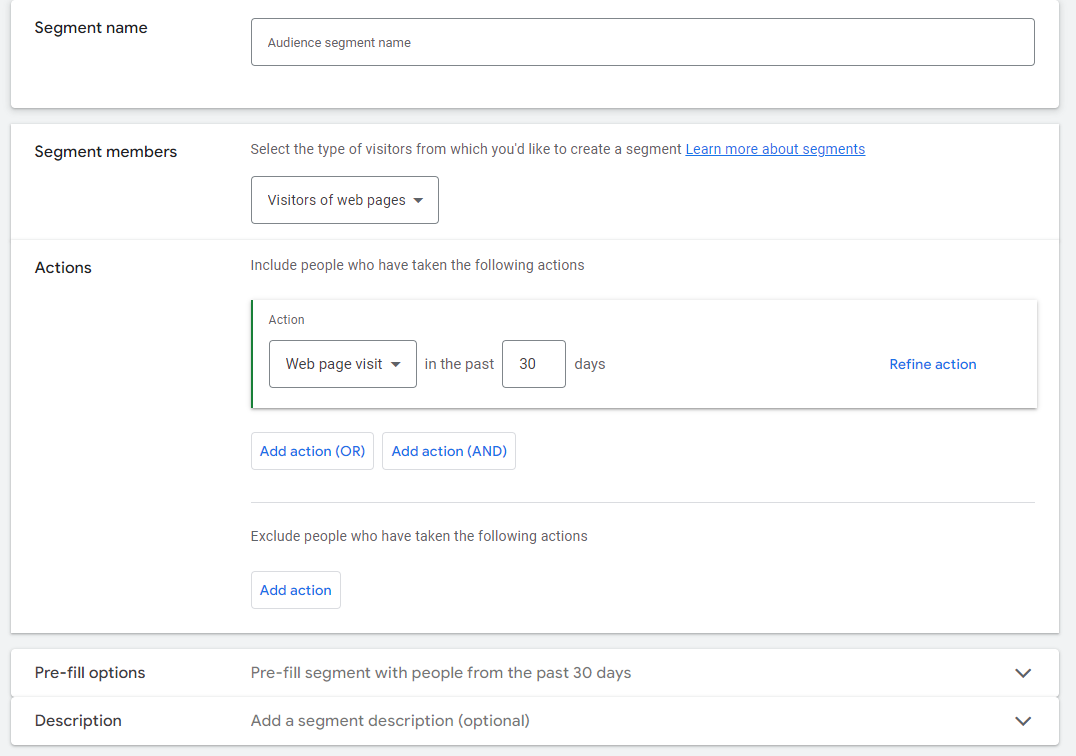
- Website and app visitors:
A simple way to re-target your website visitors, these lists can be built automatically via a connection between Google Ads and Google Analytics or if your CRM integrates with Google Ads. - Customer Match:
This type of list is extremely useful to train the algorithm on what your ideal customers look like and to feed it extra data points that will help enhance the performance of your account. Not to mention, you can also re-target these users for additional upsells or just branding campaigns for the long run to improve your brand image.
Here's how you can create a customer match list. - Similar segments:
In order to get similar segments to be available, you would have to create them from either a list from remarketing or a Customer Match list with at least 1,000 cookies with enough similarity in search behavior to create a corresponding similar segment.
Custom Segments

I saved the best for last.
Custom segments in Google Ads let you select the data that you want to use to build your own audience by using the following criteria:
- The interests or purchase intentions based on keywords you put in
- The searches people made on Google for a list of keywords you provided
- A list of apps or websites (URL-specific) that your ICP might be browsing
As you can guess, this opens up the door for creativity and is especially useful in B2B situations where you know what the buyer's journey is.
For example, say there's a particular Gartner or G2 category page that users might be browsing during their process of making a decision. You could then target those users with laser-accurate ads and messaging to make a compelling case for your product or service.
Which Audience Segments are Best for You, and When Should You Use Them?
The correct answer is that it depends on your specific audience, the campaign type, budget, and reach required for the campaign to actually run and show ads (if you go too narrow, the campaign won’t be able to serve any ads—a common limitation across ad platforms).
Let’s put this into context with a real B2B example by picking a random company, and let's say we're looking for accounting software for our small business.
Now we have to think about how the buyer's journey would look for such a product and who is involved in making the final decision.
Note: This is an oversimplified version of the journey to make a quick point.
- The accountant identifies a problem and starts looking for information around that: let's pretend it's 'manual data entry' which is a common problem.
Targeting options using Google Ads audience segments: highlighting the pain points of manual data entry and introducing your software as a solution.
a) In-market audiences: users researching products in the accounting software category.
b) Custom Intent audiences: based on keywords: 'manual data entry solutions', 'accounting software', 'reduce manual data entry'.
c) Affinity audiences: targeting users with a general interest in services like accounting and finance. - Then doing research online using the keywords most likely: 'accounting software', 'accounting software for small businesses' which helps identify a few potential products from the top 10 lists and other review sites online—say it's Capterra: https://www.capterra.com/accounting-software/
Targeting options using Google Ads audience segments: emphasize key features of your product, such as ease of use, integration capabilities, and automation.
Custom Segment Audiences: Target users who have shown interest in accounting software review sites like Capterra and others, think of other top X websites or software comparison sites by adding their URLs. - They talk to their boss and discuss internally or with other peers from the industry what they recommend, narrowing the list to a top 3.
Targeting options using Google Ads audience segments: emphasize comparison points and how you are better than others.
Combined Custom Segment Audiences: Target the users that have visited your competitors site and have also searched for 'accounting software', including the previous segments built above. - Here, they might do a trial of the software and make a decision based on its price, support, ease of use, and purchase.
Targeting options using Google Ads audience segments: Focus on trial offers, pricing details, and customer testimonials.
Customer Match Audiences: using email lists of leads who have shown high intent.
Remarketing Audiences: targeting users who have engaged with previous campaigns.
Having all this information helps us see clearly how we can leverage Google Ads audience segments to target accountants in the different stages of the funnel.
How to Create Audience Segments in Google Ads
Setting up an audience is fairly straightforward; the important part is to think about your ICP's buying behavior first, and the content and specific messaging you want to have for each stage of the journey, doing proper keyword research to uncover intent vs. informational type keywords you can use within the audiences.
Once all the pieces of the puzzle are put together, you can start building the segments from the interface.
Google does a pretty good job explaining how to create each audience segment type, so I'm not going to go into details about this.
As a short overview, you go into your Google Ads Manager/Google Ads account and select Tools > Shared Library > Audience Manager > Audiences.
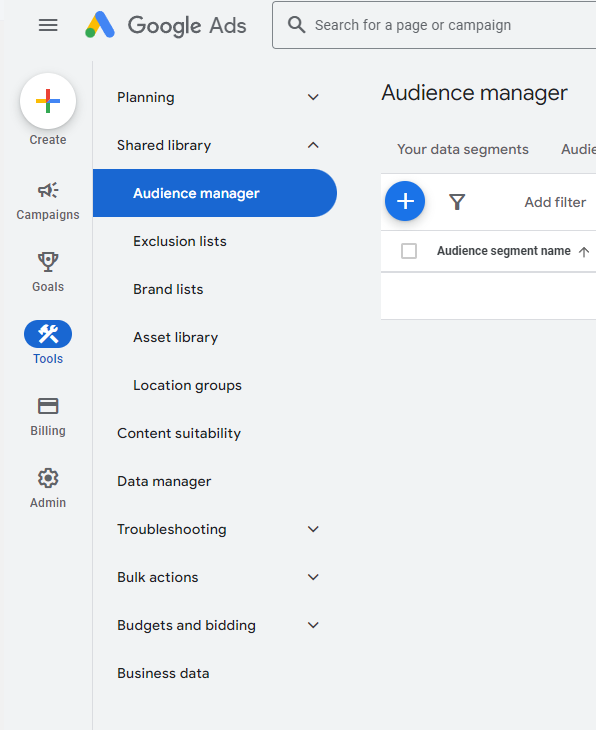
The Power of Combined Segments
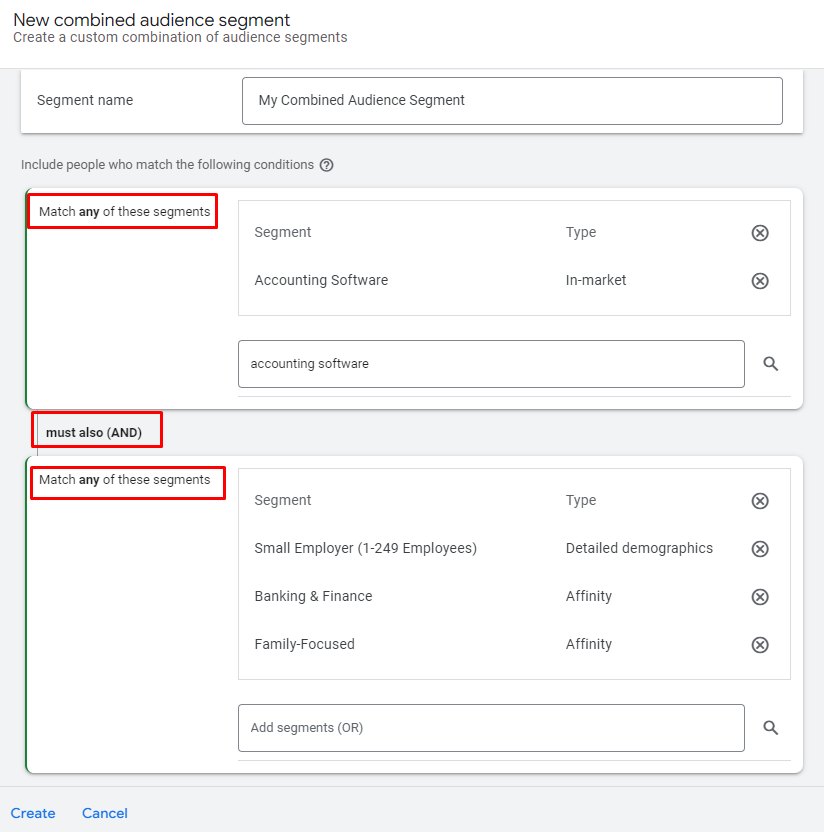
Combined audiences work by finding the perfect intersection between 2 or more audiences allowing very specific targeting.
It allows the selection of multiple audiences and a mix of all audience types that you can play around with to perfectly match your ICP. Use the 'AND' and 'OR' operators carefully as it can get complex fast and you'll be able to drill down and find that sweet spot.
The caveat is that if you add too many, the audience pool might get too small and you won't be allowed to use it within your campaigns.
Audience Exclusions: A Hidden Gem
Let's first talk about a practical example on how Audience Exclusion is paramount.
In our B2B example before we identified at least 4 different campaigns we could run on each stage of the fictive buyer's journey. But our ads in all those campaigns might overlap even with the custom audience setup.
To fix this, we would use Audience Exclusion and add anyone who has seen our ad before or taken an action from the previous campaign to be included in the next one, from the next step, and we do the same for the other campaign settings.
By doing this, we're effectively excluding people that converted, or has consumed lets say a video campaign or top funnel campaign so we can move them to the next one and they can see the next ad.
The reduction of wasted ad spend is also a huge factor here, and this feature gives campaign managers a way to have more control over who is able to see our ads.
Conclusion
Audience Segments in Google Ads are a game-changer and if you're not using them you're missing out on higher conversion rates, targeted ads, reduced cost per acquisition and you're not actively using your money to get more data on your audience.
